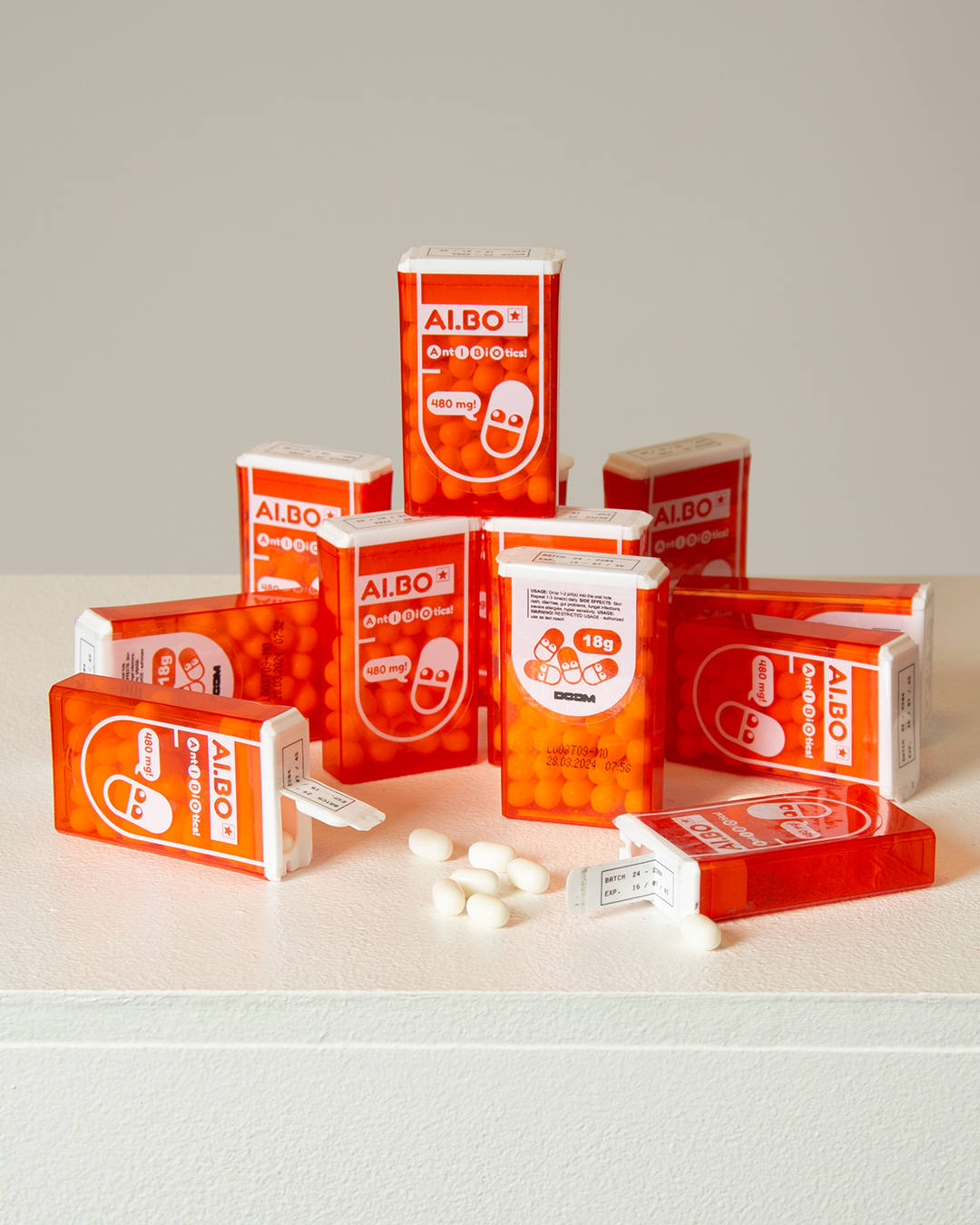Under Your Skin,
Klara Viridén, Ted Söderberg
Antibiotics have a wide range of uses and have become the miracle medicine humans need. After they became available in the 1940s, life expectancy increased, surgeries got safer and people could survive what used to be deadly infections. Their efficiency in killing bacteria has resulted in antibiotics being the foundation of the modern health system, from treatment of simple infections to advanced surgeries.
However, just because something is effective doesn’t mean it will continue to be so. Overuse comes with the cost of resistance and loss of beneficial bacteria. Similar to a nuclear arms race, higher doses and broad-spectrum antibiotics are being prescribed to kill the resistant bacteria, resulting in even bigger destruction. Like cockroaches surviving an atomic blast, this leaves only resistant bacteria and few beneficial bacteria behind.
Klara Viridén, Ted Söderberg
Antibiotics have a wide range of uses and have become the miracle medicine humans need. After they became available in the 1940s, life expectancy increased, surgeries got safer and people could survive what used to be deadly infections. Their efficiency in killing bacteria has resulted in antibiotics being the foundation of the modern health system, from treatment of simple infections to advanced surgeries.
However, just because something is effective doesn’t mean it will continue to be so. Overuse comes with the cost of resistance and loss of beneficial bacteria. Similar to a nuclear arms race, higher doses and broad-spectrum antibiotics are being prescribed to kill the resistant bacteria, resulting in even bigger destruction. Like cockroaches surviving an atomic blast, this leaves only resistant bacteria and few beneficial bacteria behind.



The yearly interdisciplinary collaboration between the Visual Communication students at Beckmans College of Design, the researchers at the Beijer Institute and Svenskt Tenn was initiated in 2017.
The collaboration aims to open up new formats and languages for research and visual communication – to meet, to interplay, and convey knowledge both rationally and emotionally.
In 2023 the students interpret the Beijer Institute’s highly topical research on antibiotic resistance, one of the biggest threats to global health and food security right now.
Antibiotic resistance occurs naturally: misuse of antibiotics in humans and animals however is accelerating this process. We want to highlight common misconceptions, encourage conversations and emphasise the fact that action, taken at all levels of society, can reduce the impact and limit the spread of resistance.
Science states that we are definitely there, and beyond. What does it take for the rest of us to understand?
Participating Students
Andreas Rehnberg, Caroline Hallersjö, Ernst Lilja, Gabriel Ankar, Greta Gustafsson, Jonas Hemlin, Justus Skördeman, Klara Viridén, Linnea Arminda Birkelund, Ludvig Wänelöf, Mauritz Larsson, Oscar Hagberg, Rebecca Lagerstedt, Salmah Jumbe, Ted Söderberg.
Course Director
Sophia Wood
External Mentor
Helena Hammarskiöld
Exhibition Concept
Andreas Rehnberg, Caroline Hallersjö, Ernst Lilja, Klara Viridén, Ludvig Wänelöf, Mauritz Larsson.
Exhibiton Design
Caroline Hallersjö, Mauritz Larsson
Photography
Greta Gustafsson, Jonas Hemlin
Website
Mauritz Larsson
Participating Researchers
Max Troell, Patrik Henriksson (The Beijer Institute),
Peter Søgaard Jørgensen, Tiscar Graells (GEDB),
Andrea Caputo Svensson (ReAct - Action on Antibiotic Resistance).
Svenskt Tenn
Thommy Bindefeld (Senior Advisor),
Karin Södergren (Head Curator),
Åsa Brenner Toris (Curator),
Klara Hjärtsjö (Project Coordinator).
Exhibitions and Dates
The Royal Swedish Academy of Sciences,
Stockholm, 18/4–8/5
The University Main Building, Uppsala, 9–10/5
Svenskt Tenn, Stockholm, 8/6–17/6
Exhibition gallery ︎︎︎
Contact ︎︎︎
















